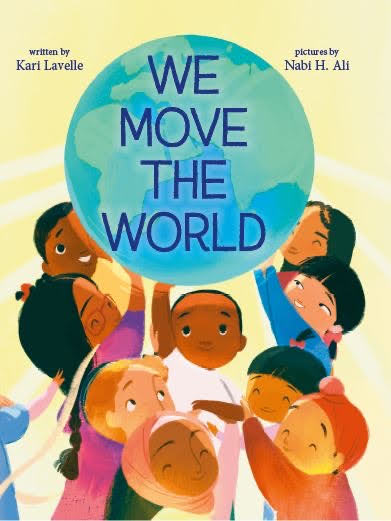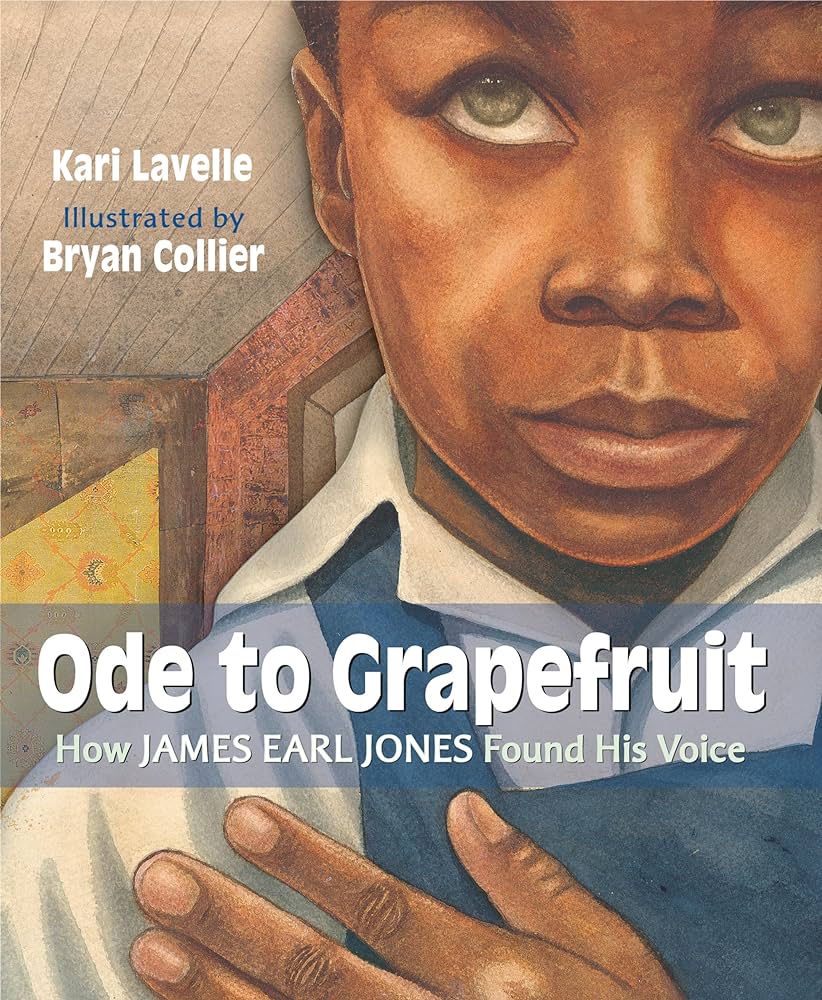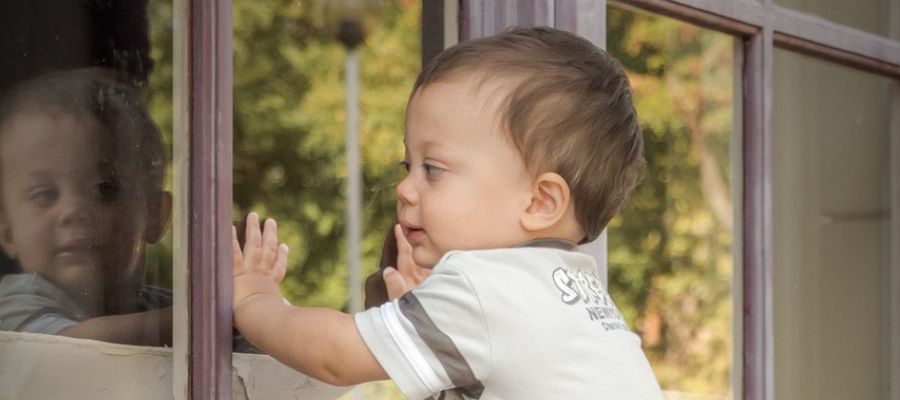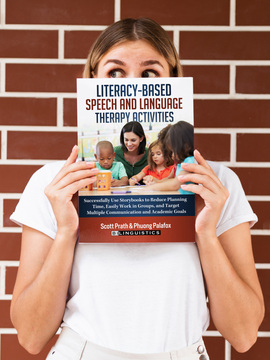
I recently sat down with fellow speech-language pathologist, Kari Lavelle, to talk about her experiences as an author who places a high importance on books on diversity. Kari has written three non-fiction children’s books about diversity that incorporate experiences and achievements from individuals from a wide range of backgrounds, as well as communicative diversity.
Kari’s first book, We Move the World, links the skills children learn in school to accomplishments made using those basic skills. She shares how Supreme Court justices, astronauts, ballerinas, musicians, actors, and healthcare workers make an impact on the world, and how it all starts with what we learn when we are young. She shows that people from all different backgrounds make impactful changes.
Her second book, Butt or Face, is a hilarious and educational book that has children guessing whether the brightly-colored pictures they see are animal butts or faces. Lavelle shares the diverse world of animal traits while building in scientific concepts like camouflage and defense mechanisms.
Her third book, Ode to Grapefruit—How James Earl Jones Found His Voice, comes out in 2024. The story shares the journey of how James Earl Jones went from a person who chose not to speak because of his stuttering to one who became an award-winning performer.



Kari Lavelle was disinvited for an author visit. Why???
I reached out to Kari Lavelle after reading about a recent event in which she was disinvited from an elementary school author visit to speak about her books. She and a fellow children’s book author, Lindsay Leslie, who writes fiction for children, do a fun presentation for school-age children about fiction versus non-fiction. What cooler way to introduce fiction and non-fiction diversity books for preschoolers than to have two authors fighting for points in the battle of the genres in their very own school library, right?
Well, not everyone saw it that way. Two school districts disinvited author Kari Lavelle from the scheduled author visits because one book was “too political” and another one had “too many butts” in it. They wanted to keep the fiction side of the presentation but Ms. Leslie declined the invitation after her co-presenter was disinvited.
Having read Kari Lavelle’s books, I was absolutely baffled by her disinvitation. Where are we in this world when we are “protecting” children from funny-looking animal butts? I mean, it’s educational and fun for kids. And then there’s the “too political” comment. Yes, Kari’s book talks about a child who wrote a letter to Barack Obama and made an impact. She also talks about social justice and the ways people who have experienced injustice and their allies take a stand. While everyone in the world will never agree on everything, it’s critical that we strive to understand the perspectives of different people. Without access to a variety of books, that is hard for children to do. Children need diversity in books to learn about diversity in the world we live in.
“A Book is Both a Mirror and a Window.”
Mira Merchant (2022) talks about the importance of representation in children’s books. She says, “Simply put, a book is both a mirror and a window. It can reflect the reality of a child’s life, allowing them to see the story of someone who looks like them, thinks like them, or lives like them. It can also help a child understand what it’s like for those who live different realities, whether that is a different racial background, religion, socio-economic status, or another facet of identity.”

The Benefits of Having Children’s Books About Diversity
Over decades research has demonstrated that access to books has an impact on children’s reading skills and overall academic skills. That piece we know, but we also need to think about what is in those books. We also need to know that the books we choose for speech therapy have a greater impact because of the focus of both literacy and communication. Books can be beneficial for so many reasons. They can help shape children’s emotional regulation, empower children to try new things, help build their confidence, and help children explore and understand new topics and issues.
Books Help Shape Children’s Emotional Regulation
When I was in my 20s I met a really incredible school librarian and professor of library science named Shirley Lukenbill. As a newlywed, it was the first time I had spent the Christmas holiday with my husband’s family. Shirley, who lived across the street, came over and read a holiday story to the whole family, spanning in age from about 2 to 70 at that time. Evidently, Shirley did this every year and they had a huge collection of books that Shirley had gifted them at Christmastime. She shared her passion for books with everyone she met.
As a young speech-language pathologist, I thought this was the coolest thing in the world, and I connected with Shirley about books many times after that first Christmas at my in-laws’ house. One of the things Shirley taught me was about the power of books for helping children understand their emotions, cope with difficult situations, and overcome hardships. Shirley Lukenbill was a master selector of books for children. In the schools she worked in, she knew her students and she knew the teachers, and they worked together to support the emotional needs of their students. She helped children who had lost parents, children who had lost a sibling, children who had lost pets, children who struggled in school, children who had a hard time making friends, and children who had illnesses, children who recently moved to the school, and the list goes on. She found children’s books about diversity that were representative of the students’ situations, and she shared those stories with them to help them understand, identify, and cope with whatever it was they were dealing with.
Books Can Be Used to Empower Children
I will quote Dr. Iheoma Iruka, Professor of public policy at UNC-Chapel Hill, about the ability of books to empower children. She said, “And then, of course, books can be used to empower. We are now in a moment in time again, when books are being used as a tool of either oppression or power… And the fact that we’re actually at a point where books are being used as a tool of power means that we need to understand it’s not just about diversity of books. It’s also the access to books and also the access to particular books that speak to the humanity of different groups of people.”
Books Can Be Used to Help Children Explore New Topics and Issues
Children’s books introduce kids to new topics, ideas, approaches to problems, and interests. They can help children understand perspectives of others who may come from a different racial, religious or socio-economic backgrounds. For me, as a young teenager, I learned my family was moving from Houston, Texas to Singapore. I can’t tell you the comfort it brought me to dive into books to learn about the new land I would be living in.
Limiting Diversity: Scholastic Book Fair
Scholastic books recently heard a lot from educators and families about the scholastic book fair diversity issue, and the option for schools to “opt in” for diversity in books. We all know Scholastic from our childhood days. Those newspaper-like booklets we got filled pictures and descriptions of books to choose from. The lucky ones convinced their parents to buy a book or two for them.
Let’s think for a minute about the impact of the selection of books in those paper catalogues. The selection in those little pamphlets influences the books that help shape the minds of millions and millions of school children—diverse school children from different religious backgrounds, linguistic backgrounds, socioeconomic backgrounds, and so on. When we limit diversity in children’s books, we limit their ability to grow and understand the world.
Knowing what we just discussed about the importance of representation in books, you can imagine the outrage from educators when, in October of 2023, Scholastic announced that schools could opt in to a special collection called Share Every Story, Celebrate Every Voice that included books about Representative John Lewis, civil rights icon Ruby Bridges, and Supreme Court Justice Ketanji Brown Jackson. Make sure you read that right. Schools have to opt-in for diversity. If they didn’t opt-in, they would receive a series of books for their students that shared limited diversity.
A CBS News report by Aimee Picchi (10/22/23) said that Scholastic initially defended its position to separate books about diversity and LGBTQ issues so that they could still easily do business in states roughly 30 states that had passed or proposed legislation prohibiting “certain kinds of books from schools.” They received so much backlash and criticism that Scholastic said they would end this practice.
A Recommended Read
My oldest child recently started college and the university she attends had required reading for all students attending the university. The book was I Never Thought of it That Way—How to Have Fearlessly Curious Conversations in Dangerously Divided Times by Monica Guzman. This was also recommended reading for a group of healthcare professionals I am a part of. It was an enlightening read that provided tools for asking questions and listening to the perspectives of others.

Let’s celebrate the diversity that exists in our world. Let’s appreciate that people have different experiences and perspectives. Let’s ensure that children have representation in the books around them and that they have access to books to allow them to be empowered, learn new things, understand their emotions, and understand the perspectives of others.




